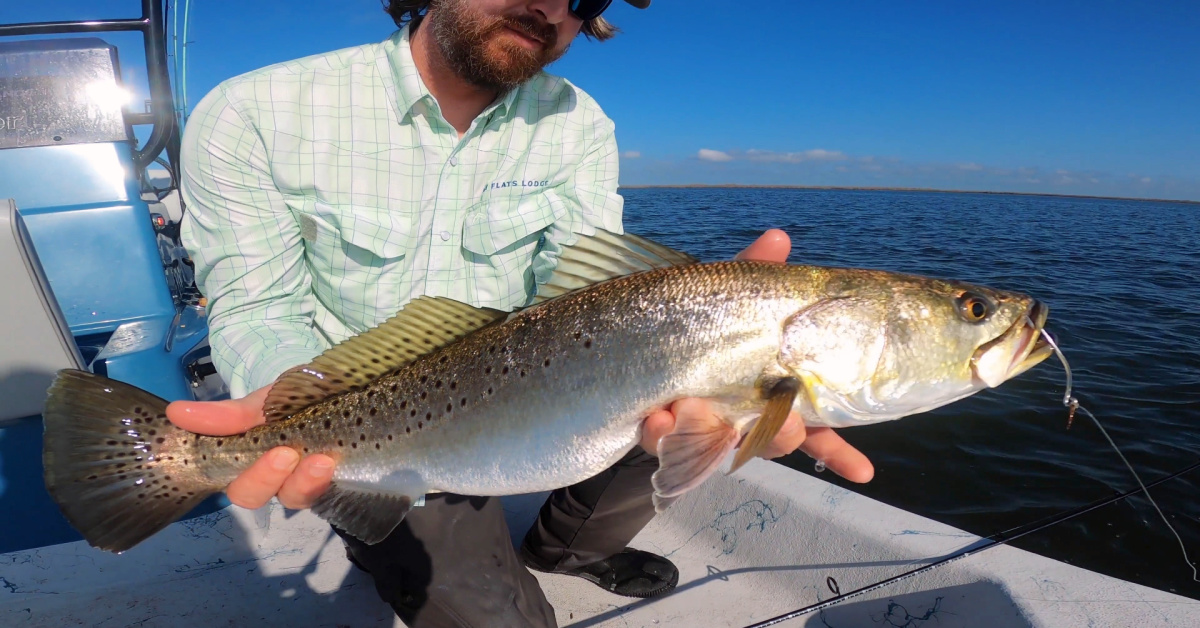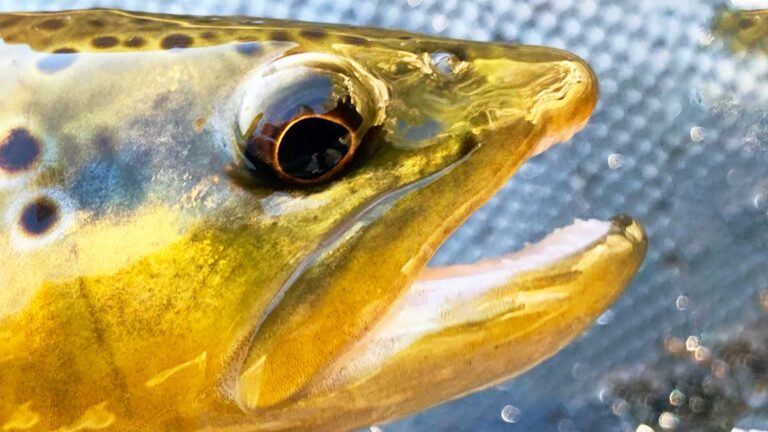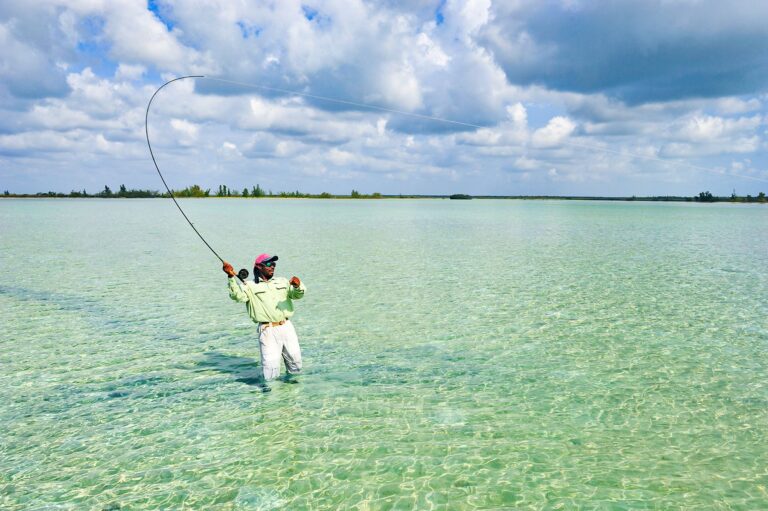Flats fishing success relies on a combination of patience, proper presentation, and keen observation. Here are some tips to help you achieve it.
Flats fishing, also known as sight fishing, is a popular angling technique that involves targeting species in shallow water. The approach requires the use of specialized equipment and a lot of patience and skill. Successful flats fishing depends on a variety of factors, such as the weather conditions, water depth, the type of fish being targeted, and the angler’s ability to present the bait or lure properly.
Being able to read the water and spot the fish is also critical, so keen observation and intuition play a vital role. In this article, we’ll provide you with some useful tips and strategies to enhance your chances of success when flats fishing.

Credit: www.saltstrong.com
Understanding The Basics Of Flats Fishing
Definition And Explanation Of Flats Fishing
Flats fishing is a form of angling that involves wading in shallow, near-shore waters in search of fish. These areas are typically flat and less than six feet deep. It’s a popular type of fishing that can be done in salt or freshwater, depending on the location.
Flats fishing is all about spotting the fish first and then casting the bait or lure to catch them.
How Flats Fishing Differs From Other Types Of Fishing
- Flats fishing is unique because of its location. It’s typically done in shallow, clear waters, making it easier to spot the elusive fish.
- The type of tackle and gear used in flats fishing is different from other types of fishing. Lightweight rods and reels are used in flats fishing to cast lures accurately and to avoid spooking fish.
- The approach in flats fishing is also different. Constant movement and stealth are required to avoid scaring away the fish.
The Role Of Tides And Weather In Flats Fishing
- Tides and currents play a significant role in flats fishing. During incoming tides, fish move closer to the shore to feed, making them easier to target.
- Weather conditions affect the water temperature, which impacts the feeding patterns of fish. Overcast days are favorable for flats fishing as fish are more likely to come up to feed.
- Wind direction also plays a role in flats fishing. The wind can push baitfish towards the shore, attracting game fish in the process.
Tackle And Gear Needed For Flats Fishing
- Lightweight rods and reels are the most common tackle used in flats fishing. A 6-8 weight rod is ideal for flats fishing.
- Flats fishing requires the use of a variety of lures such as topwater plugs, jigs, and soft plastics. Ensure that you have a variety of lures in your tackle box to target different species.
- A good pair of polarized sunglasses is essential in flats fishing. They reduce glare and help you spot fish in the water.
- It’s advisable to wear lightweight, breathable clothing and footwear. The water can get warm, and flats fishing can be a physically demanding activity.
Techniques For Mastering Flats Fishing
Flats fishing is both exciting and challenging due to the target species often being quick and elusive. However, having the right skills will increase your chances of catching fish. Here are some techniques for mastering flats fishing:
Sight Fishing: Tips And Techniques
Sight fishing is the most popular technique for fishing on flats. Here are some tips and techniques to make your sight fishing experience successful:
- Look for the right conditions: Clear water and sunny days are ideal for sight fishing as they make it easier to spot fish.
- Stay quiet and low: Move slowly and quietly, making the least amount of noise possible, while keeping a low profile to avoid spooking fish.
- Observe fish behavior: Watch how fish move and where they feed to understand their behavior patterns and react accordingly.
- Use polarized sunglasses: They will help you see through the water and spot fish more easily.
Casting To Spooky Fish: Approaches And Methods
Spooky fish can be tough to catch, but with the right approach, you can successfully cast to them. Here are the approaches and methods to casting to spooky fish:
- Distance: Stay far enough away to avoid spooking the fish while being close enough to cast accurately.
- Presentation: Cast a light lure to ensure a quiet entry and move it slowly towards the fish.
- Avoid line slap: Keep the line out of the water as much as possible and let the fish take the bait.
- Patience: Be patient and wait for the fish to make the first move.
Fly Fishing Vs. Conventional Tackle Techniques
Deciding whether to use fly fishing or conventional tackle often comes down to personal preference. Here are the techniques for each:
Fly fishing:
- Practice your casting skills: Accurate casting skills are vital for fly fishing.
- Use an appropriate leader: Matching the leader’s length, weight, and construction to the conditions and species can make a significant difference.
- Choose the right flies: Choose fly patterns that are appropriate for the fish species and conditions.
Conventional tackle:
- Match your gear to the species: Choose appropriate rods, reels, and lines regarding the fish species and the conditions.
- Use live bait: Live bait can prove to be effective. Always choose bait that is natural to the species you’re targeting.
- Master your retrieval techniques: Retrieval techniques and lures should be varied according to the fish’s feeding behavior and the conditions.
Reading The Water And Detecting Fish Movement
Reading the water and detecting fish movement are essential skills for successful flats fishing. Here are some tips:
- Look for feeding activity: Birds diving and fish activity on the surface are good indicators of fish’s feeding behavior.
- Pay attention to the weather: Weather changes affect fish, and studying the different weather patterns can help determine how fish behave.
- Understand the tide: The tide will affect species migration, feeding habits, and their position on the flats.
- Observe the water’s color: Darker colors often indicate drop-offs, channels, or deeper pockets where fish can hide. Lighter colors indicate shallow flats.
Conclusion
After reading through these tips for successful flats fishing, it is clear that preparation is key. Knowing where to find the fish, understanding their behavior, and having the right equipment will make all the difference in your success on the flats.
Patience is also crucial, as flats fishing requires a slow and steady approach. Be observant, keep an eye on the tides, and don’t be afraid to try different techniques until you find what works best for you. Remember to respect the environment and the fish you are targeting, as sustainable fishing practices are important for the future.
By following these guidelines, you will be well on your way to a successful flats fishing experience. Tight lines!




